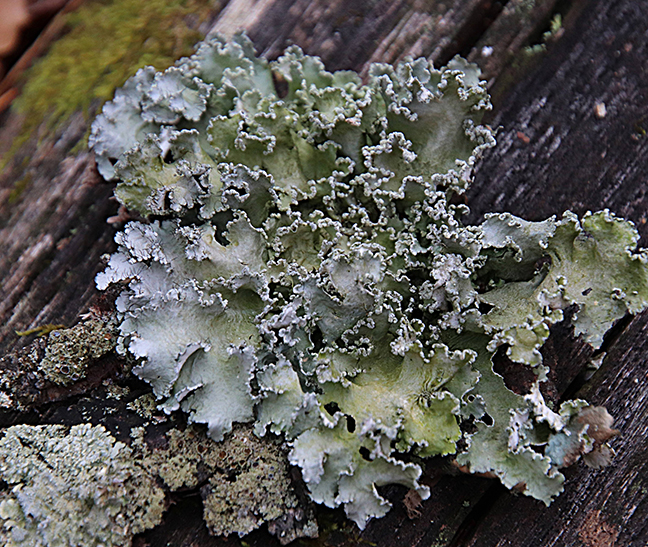Happy Mystery Monday! Can you guess what is pictured in the photo below?

The answer to last week’s mystery is foliose lichen, pictured in the photo below:.

Foliose lichen is one of the three most common growth forms of lichens. Foliose means leafy, as they tend to look like leafy growths that are attached to a base with one or more stem-like structures called rhizomes.
Foliose lichens provide food and shelter to wildlife. Some species of birds and squirrels use them for nests, while some amphibians use lichens as camouflage. Lichens are low in protein but high in carbohydrates. They are one of the few foods available in areas where winters are very cold. Many species of deer, mountain goat, antelope, and caribou depend on them for part of their diet. Small mammals like flying squirrels, rabbits, and voles also consume lichens.
Lichens can be found almost everywhere on earth. They are a pioneer species. This means they are the first to come into an area that has been recently disturbed by events including lava flows, glaciers, and other natural disasters. Pioneer species help the area recover and create a more stable ecosystem. Carpets of lichens can prevent soil erosion where infrequent but heavy rains appear. In these environments, they also prevent wind erosion.
Lichens are a composite organism, meaning two organisms living together as one. In the case of lichens, it is a combination of a fungus and algae. The fungi never exist outside of the lichen and the algae can occasionally be found outside the lichen. The fungus provides the habitat and protection for the algae while the algae provides the food.
Lichens can have a very long lifespan ranging from 30 to over 4,500 years.
Mystery Monday is sponsored by the Spy Newspapers and Adkins Arboretum.



Write a Letter to the Editor on this Article
We encourage readers to offer their point of view on this article by submitting the following form. Editing is sometimes necessary and is done at the discretion of the editorial staff.